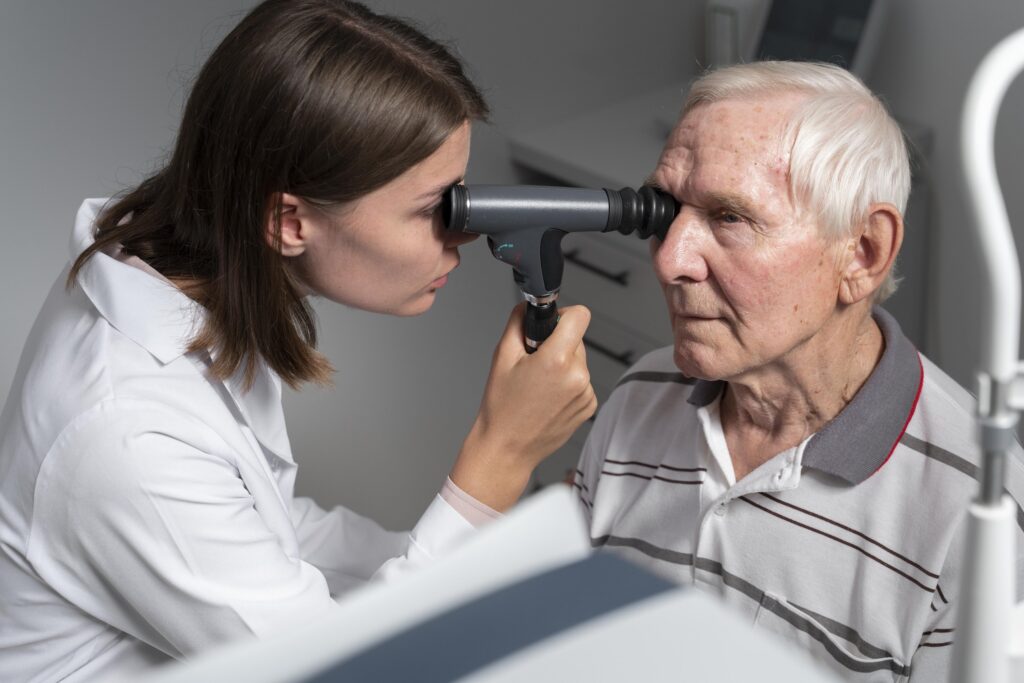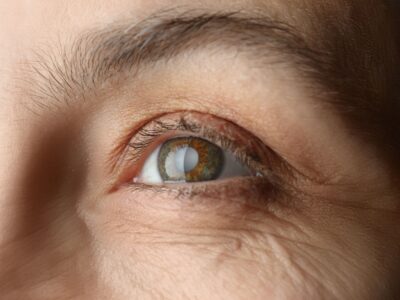Understanding Cataracts Treatment Options for Seniors
Feb 22 2025 Cataracts Treatment Options cataract eye surgery cataract surgery sydneyTable of Contents
ToggleCataracts Treatment
Cataracts are a common vision problem in the aging population. As individuals age, they may experience a gradual clouding of the eye’s natural lens, which can significantly impact their quality of life. Understanding the various treatment options available is crucial for seniors to maintain their independence and enjoy their daily activities.
What are Cataracts?
Cataracts occur when the proteins in the eye lens clump together, leading to cloudiness. This clouding can affect vision clarity and may create challenges in daily tasks such as reading, driving, and recognizing faces. As cataracts progress, they can lead to increased difficulty with vision, necessitating medical intervention.
In conclusion, understanding the Cataract treatment options available for cataracts is essential for seniors and their families. With an emphasis on timely intervention and ongoing management, cataracts can be effectively treated, ensuring a brighter future for those affected.
The Science Behind Cataracts
The lens of the eye is primarily made up of water and proteins. As people age, the proteins may become less soluble and start to aggregate, resulting in a cloudy appearance. Factors such as UV exposure, diabetes, smoking, and prolonged use of corticosteroids can accelerate this process, contributing to the development of cataracts.
Cataracts can be classified based on their position in the lens: nuclear cataracts (center of the lens), cortical cataracts (outer edges), and subcapsular cataracts (back of the lens). Each type can influence vision in different ways, revealing how they may require unique approaches to treatment. For instance, nuclear cataracts often lead to a gradual decline in distance vision, while cortical cataracts may cause issues with glare and contrast sensitivity, making it difficult to navigate bright environments.
Read about laser eye surgery at: The Most Common Myths About Laser Eye Surgery Debunked
Common Symptoms of Cataracts
Individuals with cataracts may experience a range of symptoms. Commonly reported signs include blurred or cloudy vision, difficulty seeing at night, sensitivity to glare from lights, and frequent changes in prescription glasses. Over time, these symptoms may worsen, leading the individual to seek professional advice.
Some seniors may also report seeing halos around lights and a gradual fading of colors. Understanding these symptoms can assist families and caregivers in recognizing when it is time to consult an eye care professional. Additionally, it is essential to note that cataracts can develop in one or both eyes, and the progression may vary significantly between individuals. Regular eye examinations become crucial, as they can help detect cataracts early, allowing for timely intervention and management strategies that can improve quality of life. Read more about intervention at https://pubmed.ncbi.nlm.nih.gov/28257908/
Moreover, lifestyle choices play a significant role in the development and progression of cataracts. A diet rich in antioxidants, such as vitamins C and E, can help protect the eyes from oxidative stress. Foods like leafy greens, citrus fruits, and nuts are beneficial additions to one’s diet. Staying hydrated and managing chronic conditions like diabetes can also contribute to eye health. Engaging in protective measures, such as wearing sunglasses with UV protection and avoiding smoking, can further reduce the risk of cataract formation, highlighting the importance of proactive eye care and healthy living.

The Impact of Age on Cataracts
Age is a primary factor in the development of cataracts. The likelihood of developing cataracts increases significantly after age 60. As the lens continues to age, the cumulative effects of environmental and lifestyle factors can lead to a higher risk of cataract formation.

Why Seniors are More Susceptible to Cataracts
Seniors are more susceptible to cataracts due to several age-related changes in the eye. The chemicals that help maintain lens clarity, such as antioxidants, decrease in effectiveness over time. This decline can lead to oxidative stress and the resultant cloudiness in the lens. Additionally, age-related diseases like diabetes and hypertension can further increase the risk of developing cataracts.
Moreover, seniors often have a longer duration of exposure to harmful UV light and lifestyle choices that may contribute to cataract development, making regular eye check-ups all the more vital as they age. Factors such as smoking and poor nutrition can exacerbate the risk, as they may lead to increased oxidative damage. A balanced diet rich in vitamins C and E, lutein, and zeaxanthin can help combat some of these risks, emphasizing the importance of nutrition in eye health. Click here to know more about uv light.
The Role of Aging in Cataract Development
Aging influences not just the eye’s natural lens but also other components of the visual system. With time, the muscles that control the lens’s shape may weaken, making issues like presbyopia (difficulty focusing on close objects) and cataracts more pronounced. Collectively, these changes demonstrate the need for seniors to stay informed about their eye health as they age.
The accumulation of cellular changes, combined with other health conditions, creates an environment in which cataracts can develop and progress. This necessitates proactive eye care to mitigate their effects. Regular screenings and early detection are crucial, as they can lead to timely interventions that may prevent significant vision loss. Additionally, advancements in cataract surgery techniques have made it possible for many seniors to regain clear vision, highlighting the importance of addressing cataracts promptly and effectively.
Different Types of Cataracts Treatments
Treatment for cataracts can vary considerably depending on their severity and the overall health of the patient. Recognizing these treatment options is essential for seniors and their families in decision-making regarding eye care.
Non-Surgical Treatment Options
For individuals with early-stage cataracts, non-surgical treatments might be recommended. These options include adjusting lighting when reading, using magnifying devices, or relying on anti-glare sunglasses to improve visual clarity in bright environments.
Additionally, updated prescription glasses can alleviate some visual difficulties. Eye care professionals may suggest these approaches as interim solutions until cataracts progress to a stage where surgery is necessary. It’s also important for patients to maintain regular eye examinations to monitor the progression of cataracts and to discuss any changes in vision with their healthcare provider. Staying proactive about eye health can lead to timely interventions and better outcomes.
Surgical Treatment Options
Surgery is the most effective treatment for advanced cataracts. The primary procedure for cataract removal is called phacoemulsification, where the cloudy lens is broken up using ultrasound and then removed. A synthetic intraocular lens is then implanted to restore clear vision.
Today, cataract surgeries are minimally invasive and generally outpatient procedures. They come with a high success rate and can dramatically improve quality of life. Most patients notice significant improvements in their vision shortly after surgery, allowing them to return to their normal activities more quickly. Furthermore, advancements in technology have led to the development of premium intraocular lenses that can correct astigmatism or presbyopia, providing patients with a broader range of vision options post-surgery. This means that not only can patients expect clearer vision, but they may also experience less dependence on glasses for daily tasks, enhancing their overall independence and enjoyment of life.
Factors to Consider When Choosing a Treatment
When considering treatment options for cataracts, it’s essential for seniors and their families to understand several key factors to make informed decisions.
Assessing the Severity of Cataracts
The severity of cataracts can greatly influence treatment options. An eye care professional will perform a comprehensive eye exam to assess visual acuity and the level of clouding in the lens. This evaluation helps determine whether non-surgical options are viable or if surgery is necessary.
In some cases, seniors may not feel their cataracts significantly hinder their quality of life, thus delaying surgical intervention. However, continued monitoring is essential, as the situation can change rapidly. Regular follow-ups with an eye care specialist are crucial, as they can provide updates on the progression of the cataracts and recommend adjustments to treatment plans as needed. Additionally, seniors should be aware of the signs that indicate a worsening condition, such as increased difficulty with night vision or reading, which may prompt a reevaluation of their treatment options.
Understanding the Risks and Benefits of Each Option
Every treatment option comes with its own set of risks and benefits. Non-surgical treatments may provide temporary relief but ultimately do not address the underlying issue of cataracts. On the other hand, surgical intervention has a high success rate, though it is essential to discuss potential risks, such as infection or complications during surgery, with an eye care provider.
Weighing these risks against the potential benefits—like improved vision and enhanced overall quality of life—is crucial. Seniors should feel empowered to engage in discussions with their healthcare providers to choose the best path forward. Furthermore, it is important to consider the recovery process post-surgery, which may involve follow-up visits and adherence to prescribed eye care routines. Understanding what to expect during recovery can help alleviate anxiety and ensure that seniors are well-prepared for the journey ahead. Engaging family members in these discussions can also provide additional support and help seniors feel more confident in their treatment decisions.
The Role of Eye Care Professionals in Cataract Treatment
Eye care professionals play a pivotal role in diagnosing and treating cataracts. Their expertise not only aids in initial assessments but also in developing tailored treatment plans based on individual needs.
How Optometrists Can Help
Optometrists are often the first line of defense in eye health. They perform regular examinations to identify early signs of cataracts and other eye diseases. By using specialized equipment and techniques, they can detect changes in vision and lens clarity much earlier than a patient might notice.
Furthermore, optometrists can educate patients about lifestyle modifications that may reduce the risk of cataract progression. They are crucial in providing ongoing vision care and collaborating with ophthalmologists when surgical options are necessary.
The Importance of Regular Eye Check-ups
Regular eye check-ups are vital for ensuring seniors maintain optimal eye health. Comprehensive eye exams can lead to early detection of cataracts and other age-related eye conditions, allowing for quicker intervention when necessary.
Additionally, these check-ups provide seniors with the opportunity to discuss any emerging symptoms or concerns, fostering a proactive approach to eye care. Encouraging seniors to prioritize their eye health can lead to better treatment outcomes and improved quality of life.
Recent Posts

How Often to Clean Your Aerobika Device: A Practical Guide for Maintenance and Hygiene
Introduction Proper maintenance and hygiene are crucial for ensuring the effectiveness and longevity of your Aerobika device. Whether you use it as an OPEP device for mucus clearance or as part of your PEP therapy, regular cleaning is essential for keeping it in optimal condition. In this article, we’ll guide you through how often to clean your Aerobika device, provide a step-by-step cleaning routine, and explain the importance of proper …Read More »
Choosing the Right CPAP Machine: A Complete Buyer’s Guide for Better Sleep
Sleep is essential for overall health, yet millions of adults struggle with sleep apnea—a common sleep disorder that disrupts breathing during rest. Continuous Positive Airway Pressure (CPAP) machines have become the gold standard for managing sleep apnea. Choosing the right CPAP machine can dramatically improve sleep quality, prevent complications, and support long-term health. This guide will help you understand CPAP therapy, compare machine types, and offer practical tips for getting …Read More »
Where to Buy Aerobika in Australia and What It Costs
What Is Aerobika and How Does It Work? Aerobika is a drug-free, portable respiratory therapy device designed to help people with breathing difficulties clear mucus from their lungs naturally. Unlike medication-based treatments, this handheld device uses mechanical pressure to loosen and mobilise secretions, making it easier to breathe and reducing the burden on your respiratory system. Understanding OPEP Technology The Aerobika device function centres on Oscillating Positive Expiratory Pressure (OPEP) …Read More »
What Is an Aerobika Device and How Does It Help With Mucus Clearance?
What Is an Aerobika Device? The Aerobika device is a handheld medical tool that uses oscillating positive expiratory pressure (OPEP) technology to help clear mucus from the lungs. Designed for people with respiratory conditions, this drug-free device assists in maintaining clearer airways and improving breathing comfort. OPEP technology works by creating controlled resistance when you breathe out through the device. This resistance generates two key therapeutic effects: Positive expiratory pressure …Read More »
Home Sleep Study Brisbane: Convenient Testing at Home
What Is a Home Sleep Study and How Does It Work? A home sleep study is a new way to diagnose sleep disorders without having to stay overnight in a hospital. Instead, you can do the test in your own bedroom. This non-invasive sleep test provides detailed information about your sleep patterns and breathing without any discomfort. How Does a Home Sleep Study Work? Here’s how a home sleep study …Read More »
